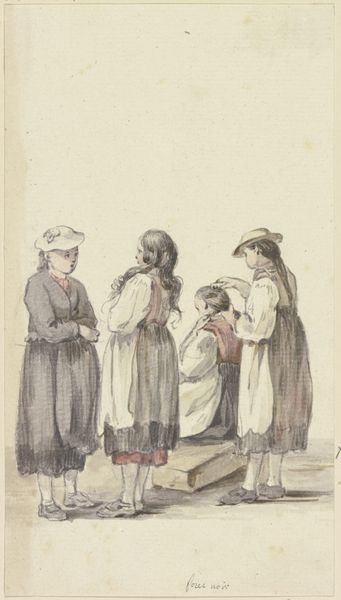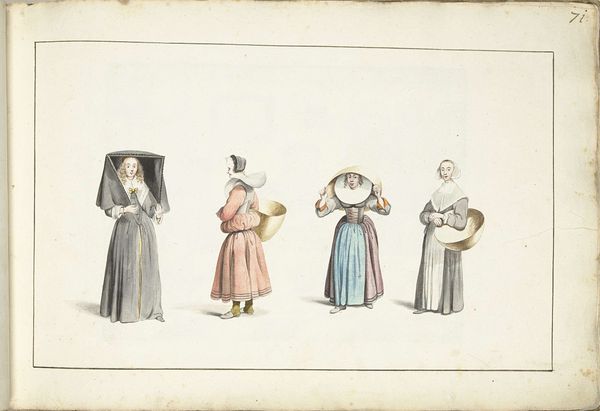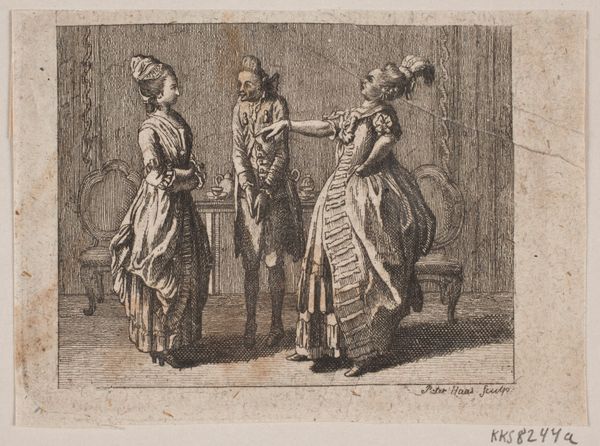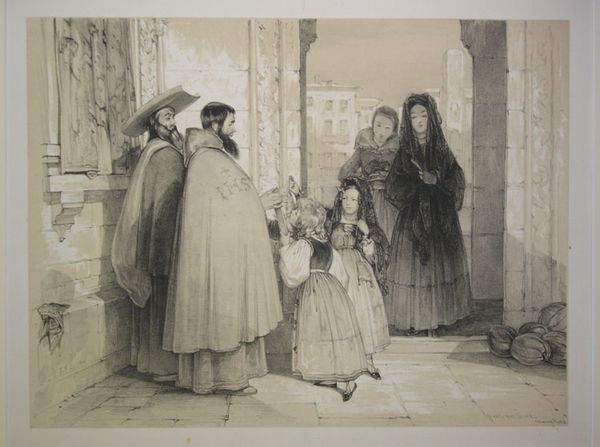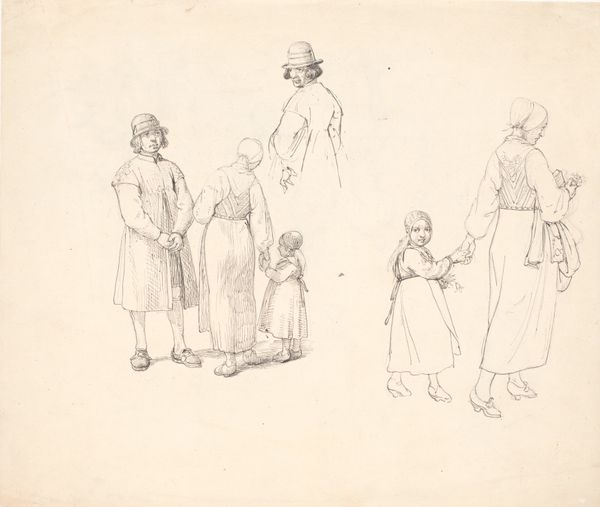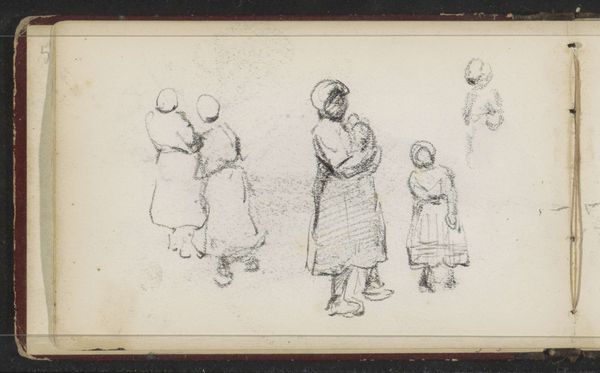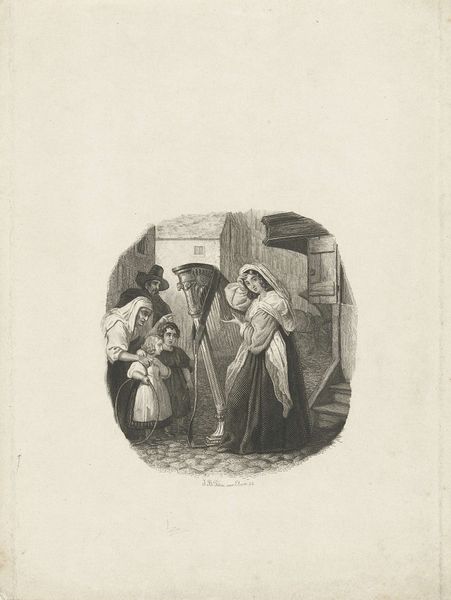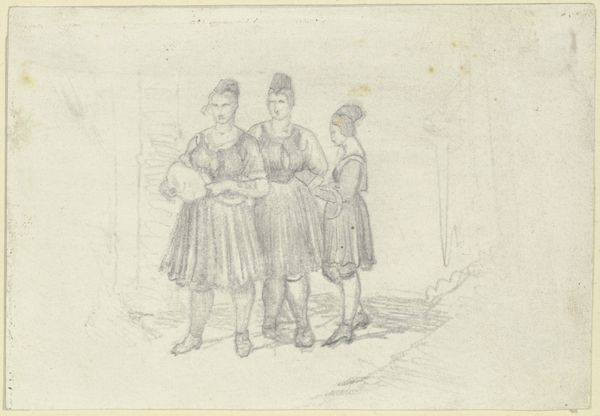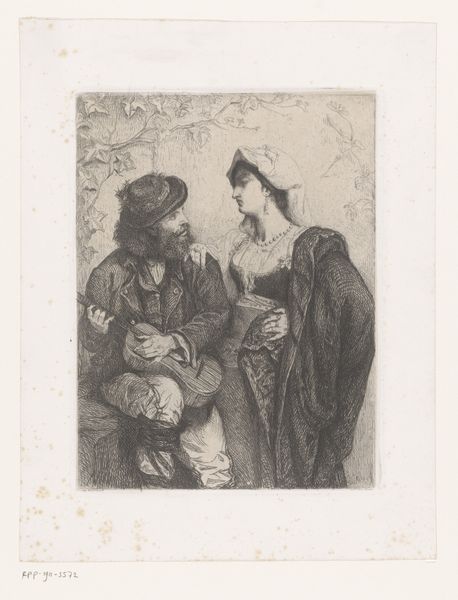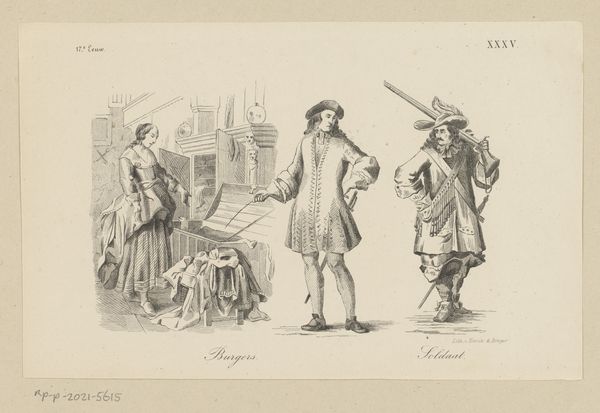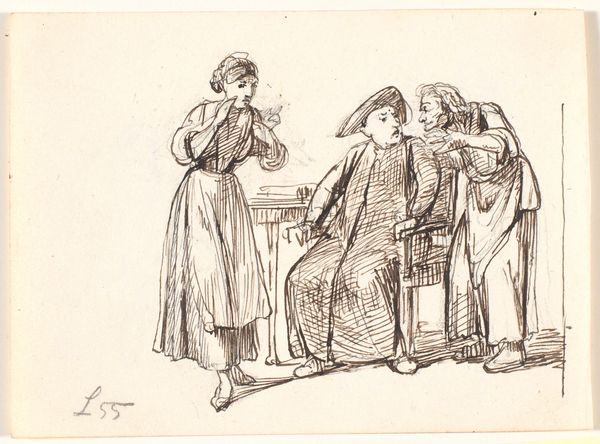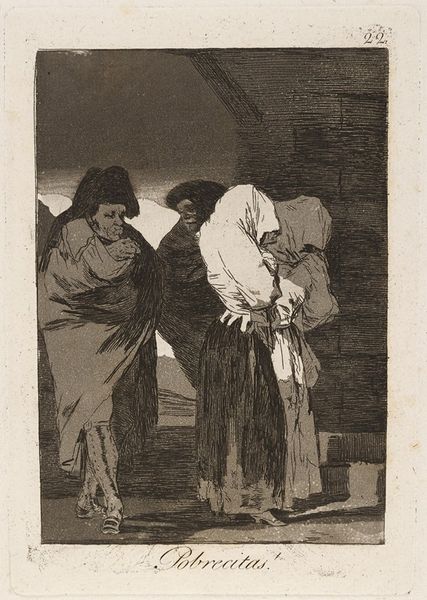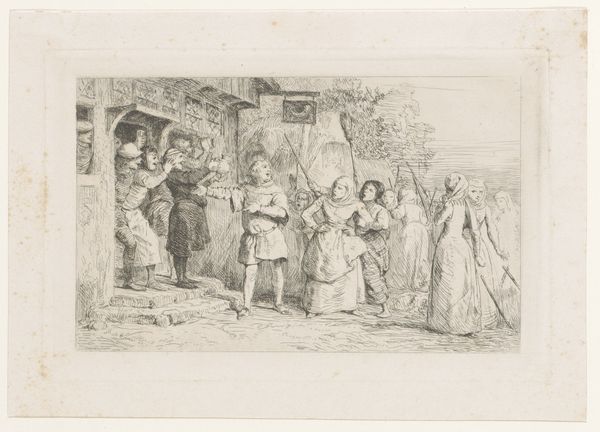
Dimensions: height 155 mm, width 229 mm
Copyright: Rijks Museum: Open Domain
Curator: Immediately striking! A somber grouping despite the implied gathering of these women. There's a distinct melancholic stillness to it. Editor: Yes, there’s a certain gravity. This drawing, "Klederdrachten van het eiland Ghozo," or "Traditional costumes of the island of Gozo" by Louis Ducros, dates from 1778 and is currently held at the Rijksmuseum. It's a genre painting done in pencil. Curator: Ducros captures something of their material realities through these pencils. Note how different the textures appear between the layered linen, possibly locally woven, and the softer shawl fabric. One can almost feel the varying weight and quality of each cloth. What could these textiles have signified socially for these women? Editor: Undoubtedly, the clothing served as social signifiers, embedding these women within the local history and structures of Gozo. Traditional clothing indicated identity, region, and likely social standing. I wonder how much Ducros interacted with these people or simply romanticized from a distance? This was after all the age of enlightenment when far away cultures captured the western imagination. Curator: That romantic gaze certainly influences how labor is presented, or rather, isn’t presented here. We see no tools, no trades—just these women adorned, almost suspended outside their everyday productive lives. It makes one consider, was this truly reflective of daily life, or was Ducros focusing instead on projecting an image he deemed captivating? What stories would they themselves tell? Editor: That raises critical points about representation. As an outsider, what was Ducros' intent in recording these costumes? Was it purely anthropological, a desire for documentation, or did colonial fantasies also play a role in how he presented these figures to a European audience? Were these clothes on display as costumes for display rather than attire used for work? Curator: Precisely, seeing through a lens of material culture pushes us to recognize the active lives these materials occupied before being immortalized as aesthetic objects, lives where labor, local skill and economic constraint dictated design and functionality. Each hem, each fold likely speaks volumes beyond a mere aesthetic consideration. Editor: Absolutely. These pencil strokes may seem straightforward, but they reflect a complex web of cultural exchange, historical documentation and potentially colonial framing. Thanks to this drawing's evocative simplicity, the audience may in turn engage with these intricacies and ask challenging questions of the past and of ourselves. Curator: A wonderful thought. It really goes to show how a seemingly simple drawing opens up avenues to so many interconnected discourses!
Comments
No comments
Be the first to comment and join the conversation on the ultimate creative platform.
